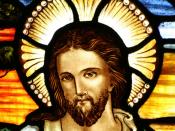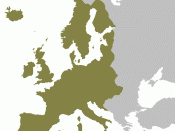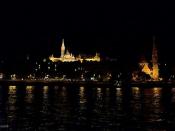Within the Church, decisive action had to be undertaken to meet the challenge of the Reformation and other difficulties that had arisen. The rise of Protestant power in northern Europe set off a defensive and totalitarian response in Catholic Italy. The Counter-Reformation put Italian culture on a war footing with the Catholic Church claiming, in effect, total control of Italians' minds and bodies. The Council of Trent, which met intermittently from 1545 to 1563, was called by the pope to deliberate these matters and to undertake reform of the Church from within. As a result of the Council's recommendations, humanistic thinking was replaced by violent reaction, with coercion and persuasion being used as twin prongs to ensure conformity to the teachings of the Church. Promises of liberal religious attitudes were broken by a return to strict Church doctrines. New access to literature and knowledge through the printing press and scientific discoveries was suppressed through the Inquisition; the Inquisition was a vast repressive machine that worked through informants and secret courts to meet ideological deviance with humiliation, prison, torture and burning alive.
God appeared not as the Loving Father but as a terrifying Judge, Christ not as the Good Shepherd but as the Great Avenger.
Art was enlisted to serve the purposes of the church militant, but that art was rigorously policed according to a system of decorum in painting which dictated what was and what wasn't acceptable in art. It was all set out by Cardinal Paleotti in 1584 and reinforced by Carlo Borromeo, the young, energetic archbishop of Milan who spent time in Rome. Borromeo gave voice to the new Church doctrines in the manuals he wrote for architects and artists, as well as for students and teachers in the many seminaries he founded. Nudity and eroticism were out,



Reformation
Thanks for a good essay on the Reformation and Counter-Reformation. Your essay was detailed and fact filled. I particularly liked the art examples you chose to illustrate your points. With the dates and facts you cite, I would have liked to have seen a list of any sources consulted. Fine effort!
6 out of 6 people found this comment useful.